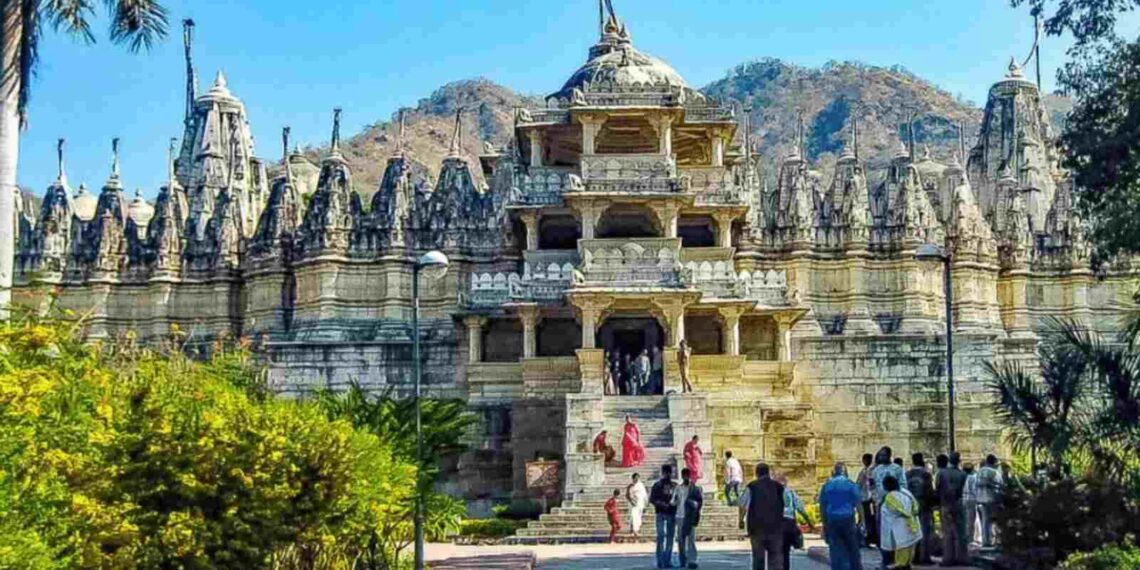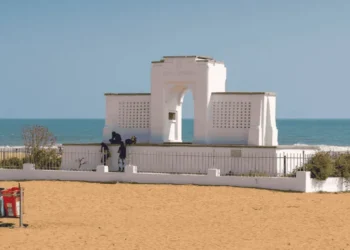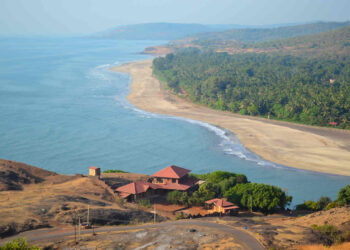The Dilwara Jain Temples, in Mount Abu, Sirohi district, Rajasthan, are a sacred group of five Jain shrines dedicated to Tirthankaras like Adinath and Neminath. Located 2.5 kilometers from Mount Abu town, nestled in the Aravalli hills at 1200 meters, they are famed for their stunning marble carvings. Built between the 11th and 13th centuries, these temples are truly a pinnacle of Jain art.
History of Dilwara Jain Temples
The Dilwara Jain Temples were built from 1031 AD to 1230 AD by wealthy Jain merchants under Chalukya rulers. The first, Vimal Vasahi, was started in 1031 AD by Vimal Shah, a minister, for Lord Adinath, per temple inscriptions. The Luna Vasahi followed in 1230 AD, built by Tejpal and Vastupal for Lord Neminath. Three smaller temples—Pittalhar, Parshvanath, and Mahavir Swami—were added later. Mughal raids in the 14th century damaged parts, but Jain traders restored them in the 1800s. A story tells of a thief who saw Adinath’s idol glow and vowed to reform, spreading the temples’ fame. The Anandji Kalyanji Trust manages them now, hosting around 4000 daily visitors and 20,000 during Mahavir Jayanti.
Architecture of Dilwara Jain Temples
The temples cover an area of 5 acres in Mount Abu’s cool hills, surrounded by pine trees and a stream. Built in the Maru-Gurjara style, they use white marble from Aravalli quarries. The Vimal Vasahi, the largest, spans 98 feet by 58 feet, with a 40-foot dome. Its sanctum holds a 5-foot Adinath idol. Luna Vasahi, slightly smaller, has a 45-foot ceiling with lotus carvings. The complex has 48 cells with Tirthankara idols and 3600 square meters of courtyards. Each temple has unique pillars—1372 total. A 200-meter path leads to a spring for ritual baths. The marble stays cool, even in summer. The temple area also has garden, parking lot, and small museum with Jain relics to serve visitors.
Sculptures and Carvings
The 5-foot Adinath idol in Vimal Vasahi, in the temples’ heart is carved from one white marble block, adorned with sandal paste and flowers. Luna Vasahi’s 4-foot Neminath idol, in black marble, shines under lamps. The 1372 pillars, 8–10 feet tall, show dancers, elephants, and Jain symbols, each carved uniquely. Ceiling panels, 2 meters wide, depict Tirthankaras, gods, and floral wheels, etched in gold. The Vimal Vasahi’s Rang Mandap has a 12-petal lotus carving, 11 feet wide. Pittalhar Temple holds a 3-foot brass Parshvanath idol, weighing 400 kilos. Side cells have 2-foot Tirthankara idols. No older relics survive due to raids from Islamic invadors, but the carvings rival lace, drawing many scholars.
Rituals and Worship
The Dilwara Jain Temples are a key center for Jain worship, especially during Mahavir Jayanti (April) and Paryushana (August/September). Adinath and Neminath are the most worshipped. Jain priests perform daily pujas, starting with abhishekam, bathing idols with milk and water, followed by rice and flower offerings. Evening aartis use 300 ghee lamps, with Sanskrit chants, as per Digambara Jain tradition. Mahavir Jayanti sees idols dressed in silver crowns, and 800 kilos of rice are offered yearly as per temple records. As per Jain rituals, they avoid music, focusing on quiet prayer. A tale says Neminath’s idol glowed during a 1700s drought, bringing rain, adding to the temples’ mystery.
Things to Do at Dilwara Jain Temples
Visitors can take part in various activities around the temple blending faith, art, and nature:
Join Prayers: Attend pujas, especially during Paryushana, to see Jain rites and get rice prasad.
See the Temples: Study the 1372 pillars, lotus ceilings, and brass idol; outer courtyards are good for photos.
Walk the Grounds: Stroll the garden and spring path, where monkeys and birds roam.
Visit Nearby Sites: See Nakki Lake (3 km), a sacred lake, or Achalgarh Fort (11 km).
Try Local Items: Buy puja items or eat Jain thalis, no onion or garlic, at stalls.
Visiting Information for Dilwara Jain Temples
How to Get There
The temples are in Mount Abu, 2.5 kilometers from town, with several travel options.
By Plane: Maharana Pratap Airport in Udaipur, 176 kilometers away, links to Delhi (1.5 hours, ₹3000–8000) and Mumbai (2 hours, ₹4000–10000). Taxis or buses take 3.5 hours.
By Train: Abu Road Railway Station, 28 kilometers away, connects to Delhi (10 hours, ₹200–800) and Jaipur (6 hours, ₹150–600) via trains like the Aravali Express. Taxis or autos take 40 minutes.
By Road: NH-62 joins Mount Abu to Udaipur (176 km, 3.5 hours) and Jodhpur (260 km, 5 hours).
Best Time to Go
November to February, with cool air (5–20°C), is best. Mahavir Jayanti and Paryushana draw 20,000 visitors, per temple logs, with quiet rites. Early mornings avoid crowds. Summers (April–June, 25–35°C) are warm while monsoons (July–September) make roads wet but hills green.
Rules for Visitors
Wear modest clothes: men need shirts and trousers or dhotis; women need sarees or suits with dupattas. Shorts, sleeveless tops, or leather items are banned. Remove shoes at the kiosk; socks help on cool marble. No smoking, alcohol, non-vegetarian food, onions, or garlic are allowed. Photography is banned inside but allowed in courtyards. You can contact the Anandji Kalyanji Trust at +91-2974-235151 for details. Watch for monkeys near the garden, as they may grab food.
Cultural Significance
The Dilwara Jain Temples are a cornerstone of Jain faith in Rajasthan, famed for Maru-Gurjara art. Their 1372 unique pillars and carvings draw architects and pilgrims from all over. Paryushana brings silent chants and families in white offering rice. Stalls sell marble idols and Jain sweets like ghevar, tying faith to Mount Abu’s life. They preserve Rajasthan’s Jain heritage, per local tales. The temples’ peace, amidst pine trees, inspires meditation, attracting scholars and devotees.
Conclusion
The Dilwara Jain Temples in Mount Abu, Rajasthan, are a marble marvel of devotion. Their ancient idols, intricate carvings, and serene rituals reflect Jainism’s cultural depth. For those seeking Tirthankara blessings or Rajasthan’s art, these temples are a vital stop in the travel list.











